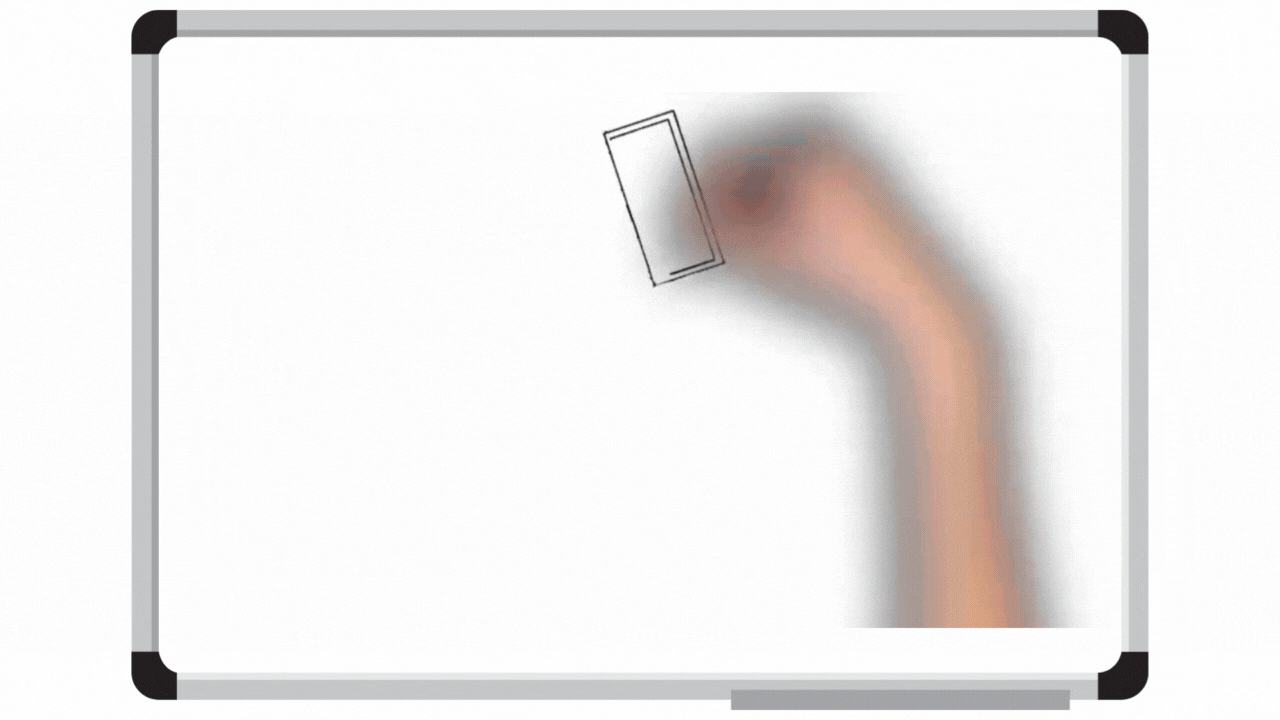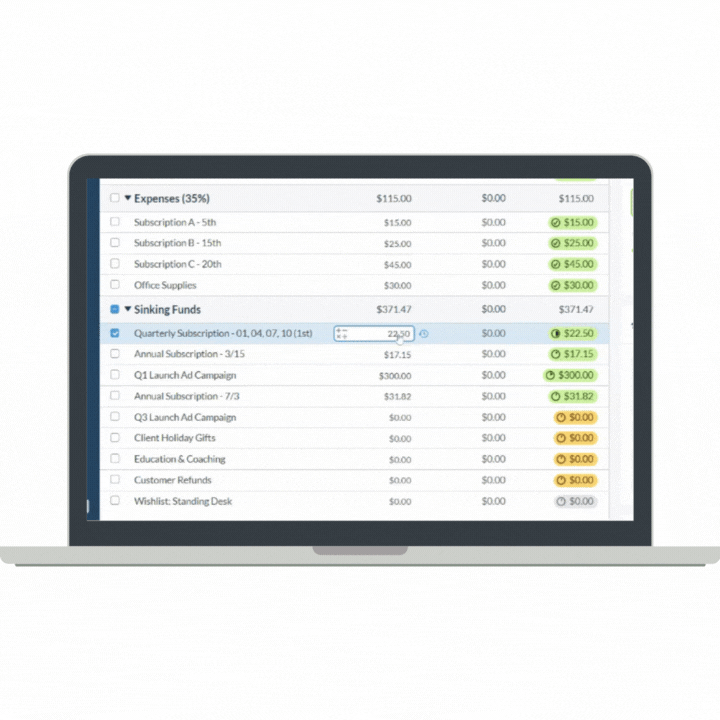Sinking Funds Explained: How to Level Up Your Budget and Empower Yourself With More Cash
Did you know that sinking funds are the true secret to an empowered budget? Transform the way you budget to a cash-focused approach that gives you the freedom and ability to control where your money goes so that you can life-proof your finances.
The Foundation: A Different Approach to Budgeting
I preach a lot about the empowerment and freedom that can come from budgeting. The key is to approach budgeting differently from how you were probably once taught.
There are several layers to this freedom-based budgeting approach. The foundation of this method involves what I like to call proactive, cash-based budgeting. Put another way, it’s about managing what you already have, not estimating what you might have.
The old-school language around budgeting involves sitting down with a piece of paper, spreadsheet, or random budget PDF you downloaded and asking yourself “how much do I expect to earn next month?”
Using that number, you set these “goals” (otherwise known as restrictions) for how much you’ll try to spend in each area of your monthly expenses until you’ve made a plan for every dollar.
The problem is that you’ve just made an entire plan on an estimated figure for income...one that may or may not happen.
And for most entrepreneurs with variable income, that just doesn’t work out well.
There are many reasons why this approach to budgeting doesn’t work, and we’ll explore them another time. But for now, I want you to understand that when I talk about budgeting…
…I’m talking about the simple process of looking at how much money is currently in your bank account and making a “written” plan for where that money is going to go. (And yes, it’s as simple as it sounds.)
If you were holding your bank balance in your hand as physical cash and you wanted to designate those dollars to their future purposes, how would you separate them out? What bills are coming due next, and what savings funds do you need to build up?
Leveraging the Power of Cash in Your Budget
The cash-based approach to budgeting is a simple mental and practical shift that will almost immediately help you to start growing your cash reserves in your bank. By having a real plan for every actual dollar you own, you’ll naturally start to have more of them!
In fact, YNAB (my #1 recommended budgeting tool for implementing this cash approach) has proven that on average, new budgeters on their platform save $600 in their first two months and more than $6,000 in their first year.
But you can take this even further.
Many new budgeters create a plan for their monthly expenses. They find themselves doing well, covering their bills and regular costs…until the inevitable occurs.
You drive over the largest nail you’ve ever seen in your life…
A customer asks for a valid refund right after you spent the money…
Your work computer decides that yesterday was the last day it ever wanted to turn on…
That pesky website renewal you always manage to forget about is suddenly due…
The holiday season sneaks up on you and you’ve somehow been invited to 12 separate gift exchange parties…
These are the little “emergencies” that sneak up on us and destroy our budgeting efforts and financial progress. They’re the reason we tend to say things like “my budget went out the window because this wasn’t a typical month.”
However, I want to ask you something. Think about your last “emergency” expense that surprised you and left you scrambling for cash.
Was this a surprise because you didn’t think it could happen…or because you weren’t prepared for it?
Accepting the “Inevitables”
I like to group what I call the “Inevitables” into three “I” categories:
The Infrequent: These are your inevitable expenses that occur on a known schedule and usually for about the same amount, but only come around 1-3 times a year (if that). Think annual subscriptions, shopping seasons, or scheduled vehicle/home/equipment maintenance.
The Irregular: These are your inevitable expenses that are likely to happen within a 1-2 year period but you don’t always know when or how much it’ll be for. Think ad campaigns, course purchases, or other large one-off business investments.
The Icky: These are those real emergency situations that you hope don’t happen but are still fairly likely to occur at some point. Think customer refunds, vehicle/equipment repairs, or medical needs.
The fact of the matter is that everything I just listed is an inevitable part of life and business. When they pop up and disrupt your budget plans, it’s not because “it wasn’t a typical month.” It’s because your budget isn’t yet set up to fund your real life.
When you factor these things into your budget, you’ll be able to get a better understanding of your true cost of living and your true cost of doing business.
Once you can accept this, you’re ready to level up from an amateur budgeter to a prepared, cash-empowered budgeter. Let’s talk about how to do it.
The Secret to a Cash-Empowered Budget
Have you ever heard the term “sinking fund?” Sinking funds are a strategic way of saving money for a specific goal by setting aside a little bit each month. It takes what would otherwise be a terrifying and sometimes devastating sum and breaks it down into a digestible savings goal you can work at over time.
And the best part? While you’re saving up your sinking fund(s), it’s just cash in the bank. It isn’t going anywhere until you need to use it.
If a higher priority pops up in the meantime, you can move the cash.
If you realize you don’t need this fund anymore, you can move the cash.
If you change your mind and want to save for a different fund, you can move the cash.
Having cash on hand gives you the power and ability to make these decisions and do whatever you want with your money.
A complete side effect of having sinking funds is that you have cash reserves protecting your cash reserves! It’s been years since my husband and I have had to use our actual emergency fund because our sinking funds act as a buffer. This is a beautifully secure place to be in.
Note: At some point, you do want to be smart about investing additional cash rather than leaving too much to sit in a bank account that doesn’t earn you any interest or dividends. However, we’re talking about covering your actual costs of day-to-day life and business - these funds should always be easily accessible!
On the flip side, if you’re short on cash and aren’t able to fully fund your sinking funds, that’s okay too. Anything is better than nothing, but you obviously need to prioritize your regular bills first.
How to Start Your Sinking Funds
Sinking Funds are powerful for both personal and business budgets! I recommend doing this for both. But, if it’s easier for you to focus on your finances in just one area, it’s okay to just start with whatever is the quickest win for you right now.
Method #1: Group Your Goal
Here’s the simplest way you can get started today, even if you don’t have a full budgeting system yet.
Brainstorm a list of every ‘Inevitable’ you can think of on a 12-month radar for your life/business.
Try to assign a dollar value for how much you’d ideally have set aside for each one if/when these events occur.
Total up your amounts, and then divide by 12!
This is important: ROUND UP. This method doesn’t account for when each Inevitable may occur, so the more cash you can save quickly, the better.
You now have your monthly sinking fund goal. In your monthly budget, aim to set aside this amount regularly! As Inevitables pop up, you can draw from this fund.
Method #2: Itemize Your Funds
Here’s my preferred method, though it’ll involve having a little bit more of a system set up (I use YNAB). I choose to track each individual fund that I have so I can be really precise with my savings goals.
Here’s an example of what this can look like in YNAB:
Each fund listed here has been set up with a specific goal in mind. For example…
The annual subscriptions track that I’m saving to have the full amount by a certain date.
The Education & Coaching fund is simply tracking that I set aside my goal contribution of $150 a month with no real desired end amount in mind.
I chose to keep my Wishlist item flexible, saving $750 whenever I can but with no deadline.
Then, with YNAB, all I have to do is assign the amounts when I have the available funds to budget!
Here, I’m using YNAB’s “quick budget” feature (off-screen) to automatically add the funds I need with the click of a single button. Because my Wishlist item at the bottom is more flexible, I manually enter the amount I want to save.
Once your tracking system is set up (whether you’re just tracking a lump sump monthly goal or itemizing your individual funds), all you have to do is be intentional with your extra funds and windfalls as the opportunity arises.
Remember, having cash on hand gives you the power to choose what you do with your money. Don’t underestimate the impact that this can have on your finances.
Are you ready to take your financial journey to the next level? Then you may be ready to check out the More With Money Academy!
This ever-growing collection of online courses and trainings are specially designed to support entrepreneurs like you on your path to financial wellness. The Academy is contains carefully designed courses that are easy to understand and implement so that you can be empowered with the practical concepts, streamlined systems, and powerful mindset to transform your business and personal finances.
Click here to explore what the More With Money Academy has to offer!
Pin for later
I'd love to continue the conversation in the comments! Feel free to share your thoughts.
Until next time!








